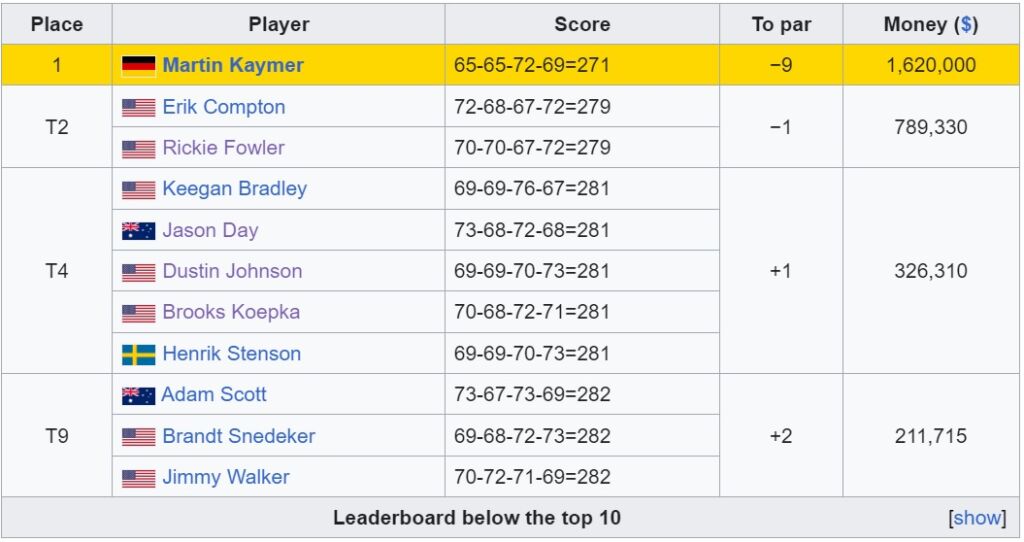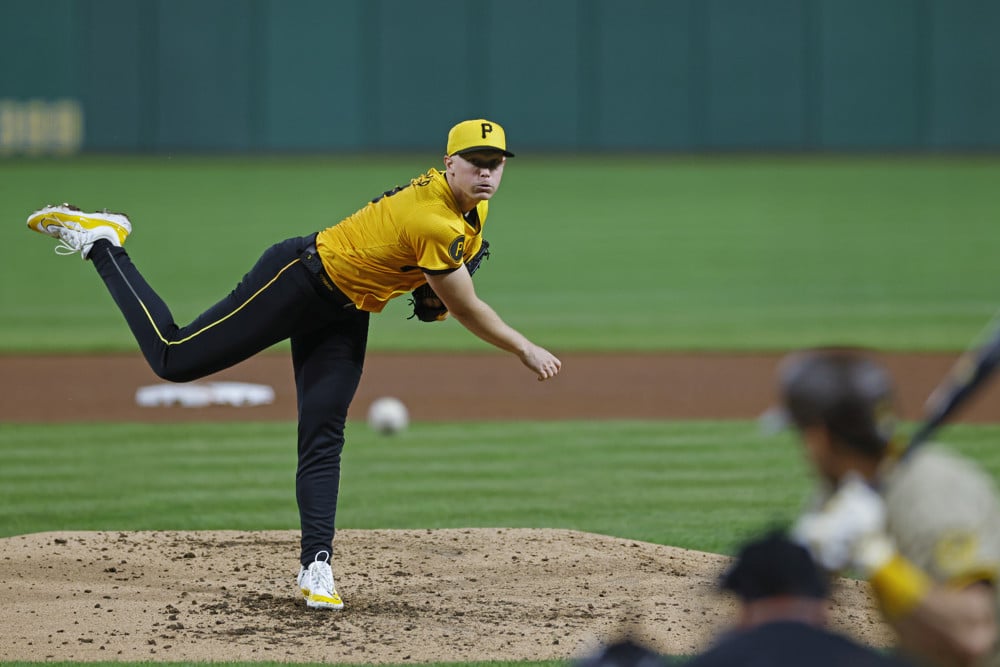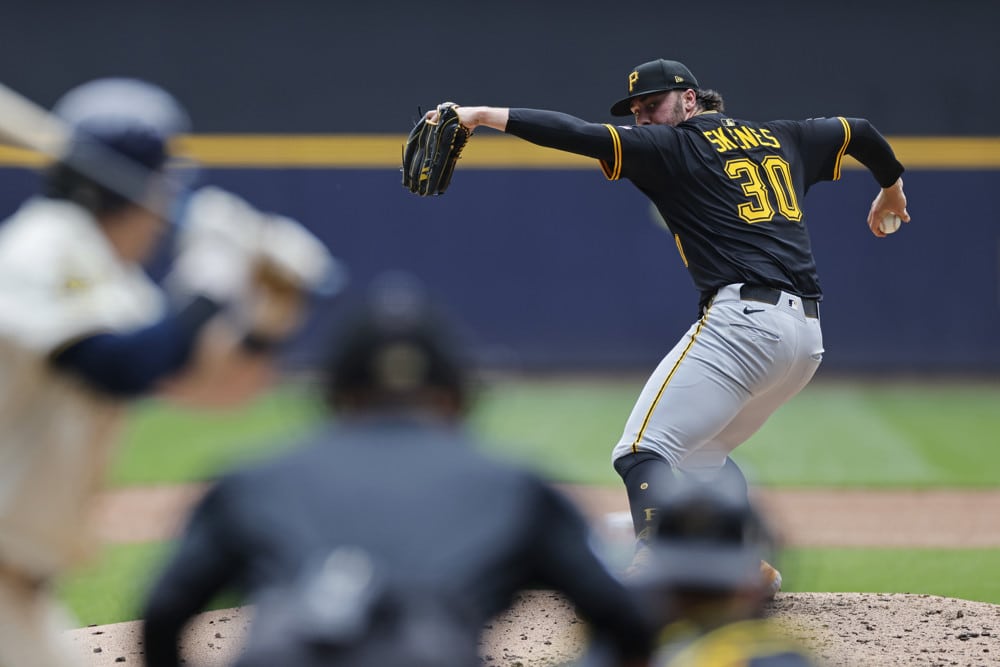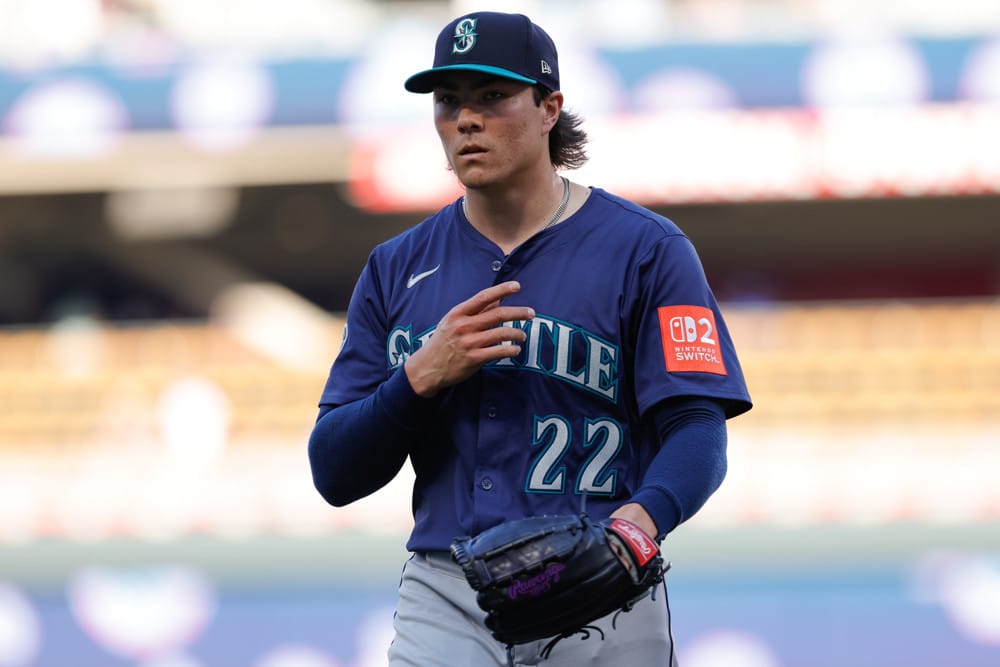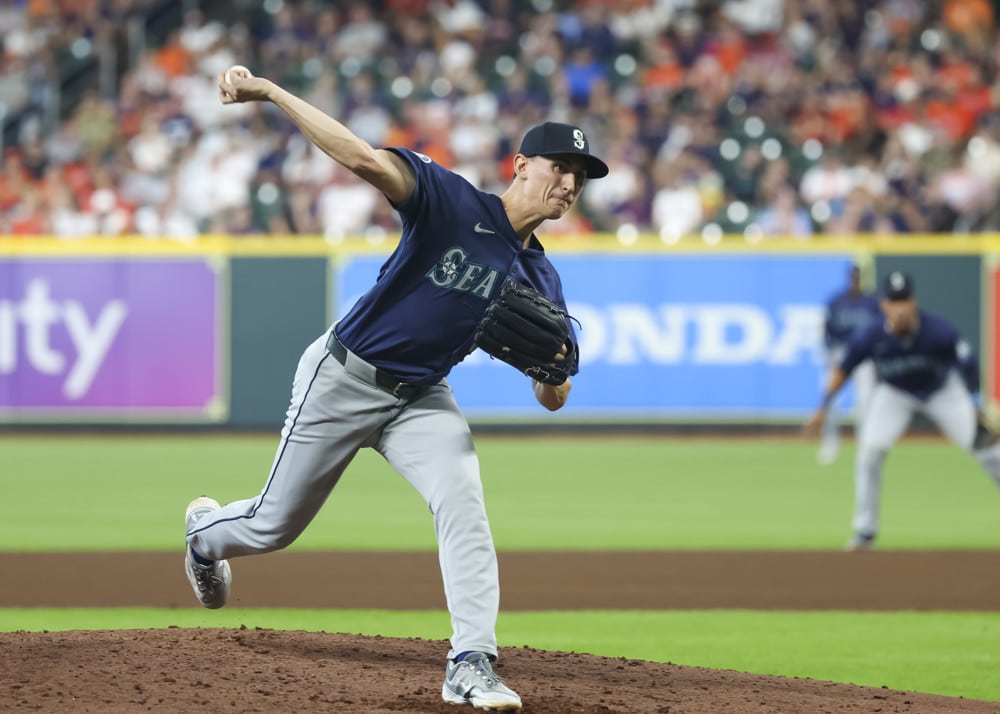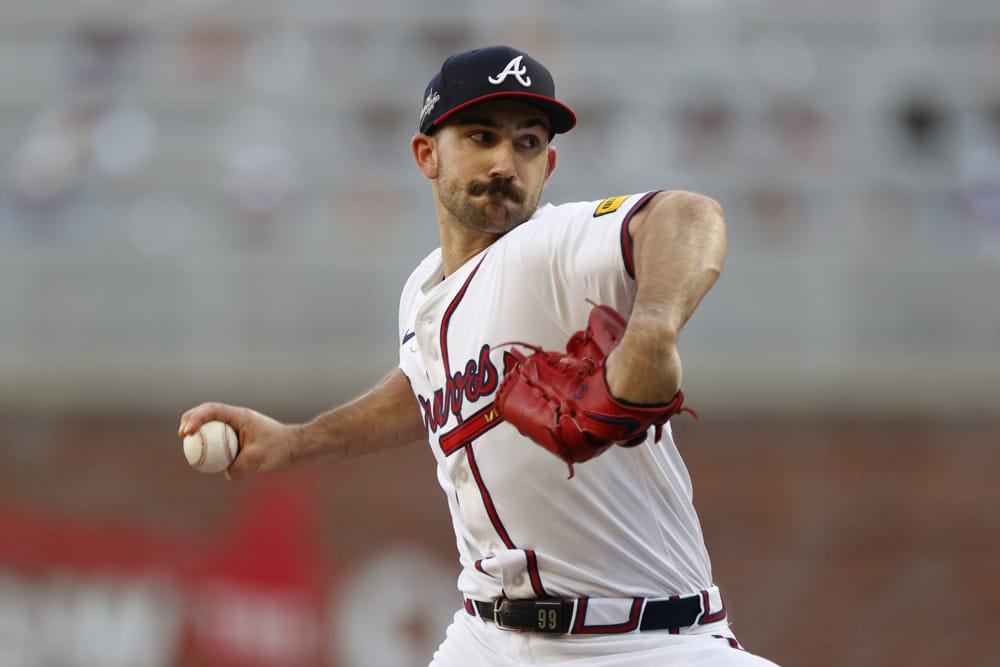The professional golf world is aflame. But the one shining beacon in the 2024 world of professional golf will be the majors. And it’s never too early to start preparing to make your bets for it. The third major of the year will take place at the famed No. 2 Course at Pinehurst Resort in Pinehurst, NC for the 2024 US Open.
With odds out on every major sports book in America, it’s never too early to start making early picks and predictions. Here’s an early preview and picks for the 2024 US Open.
Early 2024 US Open Picks and Preview
Past Champions
- 2023: Wyndham Clark
- 2022: Matt Fitzpatrick
- 2021: Jon Rahm
- 2020: Bryson DeChambeau
- 2019: Gary Woodland
LIV Golfers Expected In Field
- Brooks Koepka
- Phil Mickelson
- Martin Kaymer
- Dustin Johnson
- Jon Rahm
- Bryson DeChambeau
- Cameron Smith
Given the rampant rumors of top players being courted to leave the PGA Tour and join LIV, expect this list to grow between now and then. In addition, LIV players may qualify for the US Open through its local and sectional qualifying. There is a path into the tournament for members on LIV.
The Golf Course
Here are some key facts about Pinehurst No. 2:
Opened: 1907
Architects: Donald Ross
Renovations/Restorations
- 1974: Robert Trend Jones
- 2010: Bill Coore and Ben Crenshaw
Other Majors/Events Hosted
- 1936: PGA Championship (won by Denny Shute)
- 1951 Ryder Cup (won by USA 9.5-2.5)
- 1999 US Open (won by Payne Stewart)
- 2005 US Open (won by Michael Campbell)
- 2014 US Open (won by Martin Kaymer)
Par: 70
Estimated Yards: 7,588 Yards
There does not appear to be any lengthening to Pinehurst No. 2 since the 2014 US Open. But Pinehurst No. 2 isn’t antiquated. A 7,600-yard golf course is still long enough to challenge professional golfers. And it has defenses that distance alone cannot overcome.
Agronomy:
- Greens: UltraDwarf Bermuda
- Fairways: Bermuda
- Rough: None
The agronomy at Pinehurst No. 2 is a very important feature of its entire history.
The No. 2 course started as a nine-hole course to alleviate overcrowding of the No. 1 course. However, due to the growing popularity of the golf course, Donald Ross expanded and redesigned No. 2 to 18 holes in 1907.
It was originally all sand fairways, but over the years, Donald Ross began experimenting with various strands of bermuda to incorporate swales and ridges that now are synonymous with the golf course. The final green at No. 2 was converted to all grass by 1936.
The No. 2 course originally featured wide bermuda fairways. Instead of rough, however, off the fairway featured native wire grasses and sandy waste areas. But with the club desiring to modernize the golf course in the 1970s, Robert Trent Jones removed all of the native areas and added thick bermuda rough. In addition, Pinehurst added length.
This iteration of Pinehurst No. 2 lasted until 2010 when Bill Coore and Ben Crenshaw were enlisted to restore the golf course to its roots. As such, the bermuda rough was uprooted, and native wire grasses and sandy waste areas were reclaimed.
And while the golf course had its fair share of critics when unveiled in 2014, Coore and Crenshaw’s restoration of Pinehurst No. 2 is very well acclaimed.
Pinehurst No. 2 is an extremely popular golf destination, particularly for buddy trips. If you’re diehard enough to be reading this column in December, chances are you’ve played it. But if you haven’t, here are a few videos to show you the beauty and magic of Pinehurst No. 2.
First, here is a playlist from the USGA of a drone flyover of all holes on the No. 2 course:
Next, here’s a feature on the No. 2 course from No Laying Up’s popular Tourist Sauce series:
Finally, for those with a lot of time on their hands this holiday season, check out the full final round of the 2014 US Open, won by Martin Kaymer:
Betting Strategies
The conversation about the No. 2 course at Pinehurst can transition into what types of golfers to target for the 2024 US Open. And in order to do that, one needs to revisit what happened in 2014.
Here’s the final leaderboard from the 2014 US Open (per Wikipedia):
Martin Kaymer was head and shoulders better than the rest of the field. After 36 holes, he led by 6 over Brendon Todd. His lead shrunk to 5 after 54 holes. But thanks to a very steady final round 69, he cruised to a very comfortable win.
Here are key points about each area of the game and how that applies to the No. 2 course at Pinehurst. This will help bettors make picks for the 2024 US Open.
Off the Tee
While the No. 2 course (at its best) plays firm and fast, don’t automatically assume that players are afforded the opportunity to pull less than driver to find better control without sacrificing too much distance. In the final round, Martin Kaymer pulled driver on 12 of 14 Par 4’s and 5’s. Most players adopted this strategy.
There are opportunities for the USGA to move up or push back tee boxes to promote different strategies off the tee, though. This is primarily seen on the drivable Par 4, 3rd and 13th. The USGA played with tee boxes all week to promote more strategy and put players to a difficult choice for their tee shot club selection.
But for the rest of the Par 4s and 5s, players see a wide fairway and a hole that plays very all out in front of them. The decision to pull driver is very easy.
However, the targets on the greens are so small (due to their significantly undulating nature) that the No. 2 course is one of the last remaining golf courses played in professional golf, where the angle into each green still matters. As such, players do have to possess some sort of semblance of control with their driver.
Approach Shots
Here is the proximity data from the final round of the 2014 US Open. This information was compiled from the Round 4 hole locations, communicated approach shot distances on NBC, and estimated ones based on a comparison from the location of their approach shot and its location on Google Earth. This will help bettors make picks for the 2024 US Open.
- < 100 Yards: 11.1% (2 shots – drove the green)
- 100-125 Yards: 0.0%
- 125-150 Yards: 5.6% (1 shot)
- 150-175 Yards: 16.7% (3 shots)
- 175-200 Yards: 27.8% (5 shots)
- 200-225 Yards: 22.2% (4 shots)
- 225+ Yards: 16.7% (3 shots)
Under the assumption that the No. 2 course will play as firm as it did in 2014, there is no lengthening to the course and that players will hit driver in 2024 as often as they did in 2014, make the following adjustment to the proximity buckets for the 2024 US Open to account for the gains in distance over the last decade:
- < 100 Yards: 11.1% (2 shots – drove the green)
- 100-125 Yards: 0.0%
- 125-150 Yards: 16.7% (3 shots)
- 150-175 Yards: 22,2% (4 shots)
- 175-200 Yards: 22.2% (4 shots)
- 200-225 Yards: 16.7% (3 shots)
- 225+ Yards: 11.1% (2 shots)
Pinehurst No. 2 also is a golf course that rewards precise iron shots. As mentioned previously, the turtleback and undulating nature of the greens tighten the margins between a really, really good iron shot and a really, really poor one. Consider the following examples:
Example #1: In the final round of the 2014 US Open, Graeme McDowell and Zach Johnson teed off on the Par 3 191-yard 9th within 10 minutes of each other. Each of them chose 7 iron off the tee.
On Sunday, the optimal shot shape was to use a sideboard on the left side of the green to funnel the ball back toward the hole. Protecting the green is a large false front that repelled short approach shots back down the green into a collection area.
Graeme McDowell hit his ball to about 28 feet from the pin on the left side of the green. But his approach shot was a little too far left and short. As such, the ball slowly rolled back down off the green to the collection area.
10 minutes later, Zach Johnson hit his ball to about 25 feet from the pin on the left side of the green. But he nailed his carry distance and perfectly allowed the sideboard to funnel the ball back across the green and into the hole for an ace.
Two almost identical iron shots of similar lengths. Two wildly different results. This is Pinehurst No. 2 in a nutshell.
Example #2: On his opening hole on Sunday, Henrik Stenson hit a beautiful approach shot from 150 yards to about 10 feet behind the pin. However, he carried the ball a little too far and was unable to control its spin once it hit the green. The ball then caught a ridge and rolled down into a collection area 35 feet away from the hole. He struggled to get up and down to save par.
These two examples show how critical it is to have immense control over one’s irons. Favor those who not only hit their irons well from the proximity distances given, but who are also trending in the right direction with their irons ahead of the US Open.
Around the Green & Putting
Ask anyone who plays Pinehurst No. 2 what the most challenging aspect of it is. They’ll almost certainly say it’s the interaction between the green and the greenside surrounds. Not only is chipping off of tight bermuda difficult to do, but Pinehurst No. 2 asks you to have a wide array of chip shots in the arsenal to try and get up and down. The targets on the greens are so small that choosing the right shot from off the green is a must.
Sometimes, players need to utilize bumps and runs to get up and down. Other times, they need to go upstairs and land the ball with lots of spin to stop it. Or hit delicate bunker shots to a target the size of a recycling bin. Or even realize that the best play is to pull putter. Like at Augusta National, it takes the perfect harmony of creativity and precision to get up and down from around the green at the No. 2 course.
Before the US Open, a popular piece of advice may be to heavily favor around the green performance on the betting card and in DFS lineups.
But based on the 2014 US Open, this wasn’t the case. The average ranking in Strokes Gained – Around-the-Green of everyone inside the Top 10 that week heading into the US Open was 114th. That’s the worst collection of scramblers inside the Top 10 at a US Open since at least 2010.
To further demonstrate this point, consider that the runaway winner of the 2014 US Open, Martin Kaymer, ranked 163rd in Strokes Gained – Around-the-Green, leading into the 2014 US Open. And this wasn’t an anomaly. Per a review of Martin Kaymer’s skillset profile on DataGolf, he was woefully deficient around the green to his peers.
Yet, Martin Kaymer finished 1st in Scrambling at the 2014 US Open. So what gives? Did he just have the week of his life around the green?
This was the primary question I had as I sat through 5 hours of coverage to refresh my memory of Pinehurst No. 2 at the 2014 US Open. However, once I saw the golf course again the answer for this inconsistency was clear for four reasons.
1. Martin Kaymer refused to use a wedge from off the green to get up and down. The coverage went to great lengths to showcase these decisions from Kaymer and often disagreed with his decisions to use a putter. However, this was a strategy he stuck with for the entire tournament. And considering the tight lies around every green, one has the option of using putter if they’re more comfortable with it.
2. As mentioned earlier, precise iron shots are rewarded immensely at Pinehurst. Poor ones are punished. Hence, better iron players can mask their deficiencies around the green simply by being more precise with their approach shots all week.
3. Long putts routinely ran off the green. The greens at Pinehurst were so fast and slick that any putt hit firmly ran the risk of not only running well past the hole but off the green entirely. This is another argument that precise iron play at Pinehurst No. 2 is of the utmost importance.
4. How often are professional golfers actually tested with the greenside surrounds they’ll face at Pinehurst No. 2 in tournament play? Are they actively practicing chipping off of tight bermuda lies onto lightning-fast and undulating Donald Ross greens? Are they trying to judge how much sand is beneath their golf ball when chipping off of a sandy waste area?
These aren’t situations professional golfers face a lot on the PGA Tour. As such, are the shots that make up the bulk of one’s Strokes Gained – Around the Green even relevant for handicapping purposes?
This is a long-winded way of saying that relying too heavily on scrambling stats for your 2014 US Open handicap might not yield the best results. It should primarily be used on a case-by-case basis.
Use this area in your handicap based on the results on golf courses with similar types of conditions around the green. A few come to mind:
- Memorial Park (Houston Open) – tight bermuda lies onto fast, undulating greens.
- The Concession Golf Club (WGC Concession) – ditto
- Augusta National – tight (albeit overseeded ryegrass) lies onto fast, undulating greens.
- TPC Sawgrass – TPC Sawgrass allows players to freely pull putter from off the green often. This has helped the likes of players like Viktor Hovland and Bryson DeChambeau, two players not comfortable chipping off of tight lies, to success at the golf course.
One can also use this area based on their intimate knowledge of players who should be expected to do well in a tournament that demands lots of difficult and various chip shots. Players like Jordan Spieth, Cameron Smith, and Patrick Reed are all world scramblers and are more than adept at handling the conditions.
What one shouldn’t do is just look at a list of players who excel in Strokes Gained – Around the Green. The player who might rank 30th on this list might not have any sort of experience or skill necessary to get up and down at Pinehurst No. 2, as they might fare better at golf courses featuring heavy rough around each green.
Early 2024 US Open Picks
For those looking to place bets today, here are my early picks to win the 2024 US Open (with the best price available courtesy of Oddschecker):
Snap Pick – Viktor Hovland 15/1
Everyone is targeting Viktor Hovland for the PGA Championship as his breakthrough win. And rightfully so. The skillsets Viktor Hovland has worked perfectly for Valhalla Golf Club.
But golf gambling isn’t easy. And community chalk victories are far and few from occurring. There’s a very good chance Viktor Hovland will disappoint his many backers and leave gamblers with a sour taste in their mouths.
Maybe he’ll follow that up with a dreadful defense of his title at the Memorial. And maybe he turns back into a pumpkin around the green once again. If the narrative of “target good scramblers at Pinehurst” is a popular one, then Hovland will easily get written off.
But based on what was laid out above, Hovland is perfect for Pinehurst. Hovland is one of the best players in the world with a driver in hand and possesses a killer combination of length and accuracy. And Hovland is one of the best iron players in the world. These strengths will automatically put him on the shortlist to win at Pinehurst.
Even if he’s struggling around the green, not only will he not miss many, but on the ones he does, he can pull putter from off of it like Kaymer did. That’s a similar strategy he used for good finishes at TPC Sawgrass and Concession Golf Club.
Hovland can boat race the field like Kaymer did with an overwhelming impressive display of ball striking. Pinehurst No. 2 is the golf course I prefer Hovland at next year. And that will be his first major championship victory of his career. An early pick on Viktor Hovland to win the 2024 US Open is a good one to make.
Value Pick – Cameron Young 50/1
Bettors are waiting for his first win. It’s coming. But the stigma that he can’t close when it matters is starting to grow.
At some point, Cameron Young is going to win a golf tournament. When that happens, his odds to win the US Open (or any major championship) won’t climb north of 40/1. A win would be the cherry on top of shortening his odds for the 2024 US Open.
And Cameron Young is a great fit for Pinehurst No. 2. It’s a driver heavy golf course, and he’s one of the best drivers in the world. And he’s enjoyed success on wide, driver-heavy major championships with tight lies around the green. And though he’s inconsistent with the irons, should those start to trend positively ahead of Pinehurst, he stands a great chance of winning.
If you’re someone who still has faith in Cam Young, pick him now at 50/1 to win the 2024 US Open before he finally wins a tournament. After that happens, you miss the boat.
2024 US Open Picks – Honorable Mention:
- Max Homa – 46/1
- Tom Kim – 55/1
Longshot Pick – Cameron Davis 150/1
Targeting underdogs who possess a lot of length is typically your best shot and hitting the lottery. One that fits the bill is Cameron Davis, who should have much better results than his current resume. But at his best, Cam Davis is a tremendous driver who, at times, has shown elite abilities with his irons.
This is a combination that Wyndham Clark had before he won the US Open. He also was a career underachiever but enjoyed a renaissance with his ball striking in the first half of 2023 before finally winning not only at Quail Hollow but later on at the US Open at LACC.
Cam Davis is capable of such a turnaround too. Plus, given his Australian background, he should be quite comfortable on a firm and fast sand-based golf course at Pinehurst No. 2.
Last year, Cam Davis earned his first Top 10 at a major championship at the 2023 PGA Championship. Surprise first time winners typically have had some sort of recent major championship success before breaking through. Cam Davis is an ideal pick for a longshot winner at the 2024 US Open.
2024 US Open Picks – Honorable Mention:
- Sam Burns – 75/1
- Min Woo Lee – 80/1
- Joaquin Niemann – 100/1
- Keegan Bradley – 120/1
- Kurt Kitayama – 150/1
- Mito Pereira – 190/1
- Sepp Straka – 230/1




